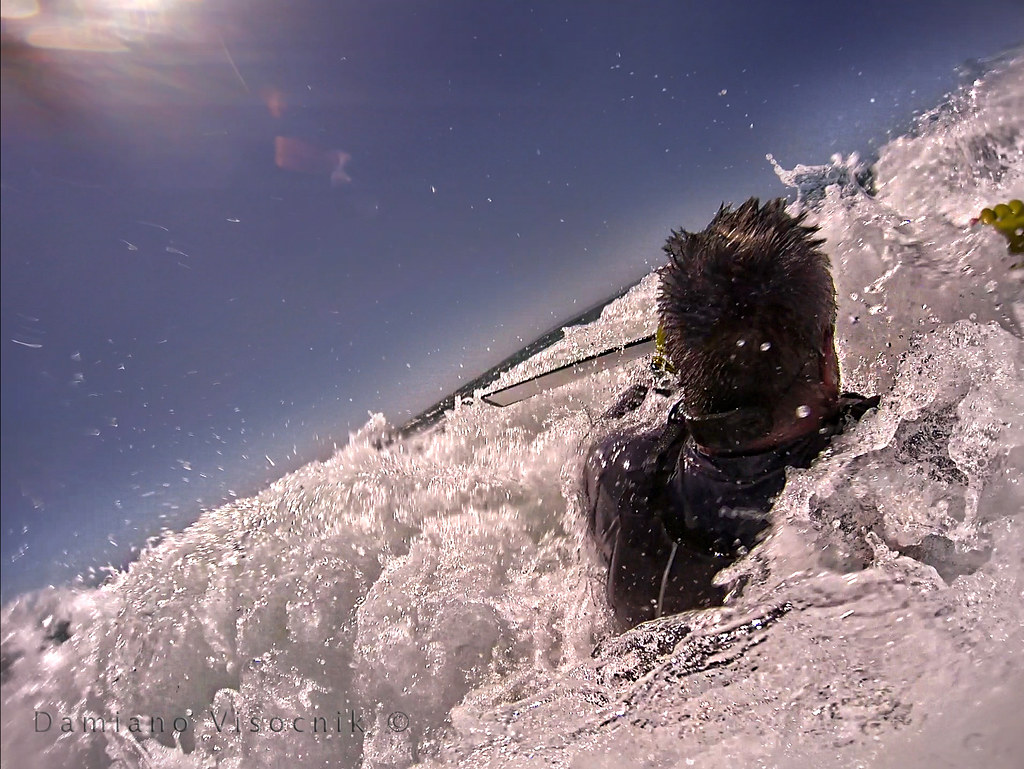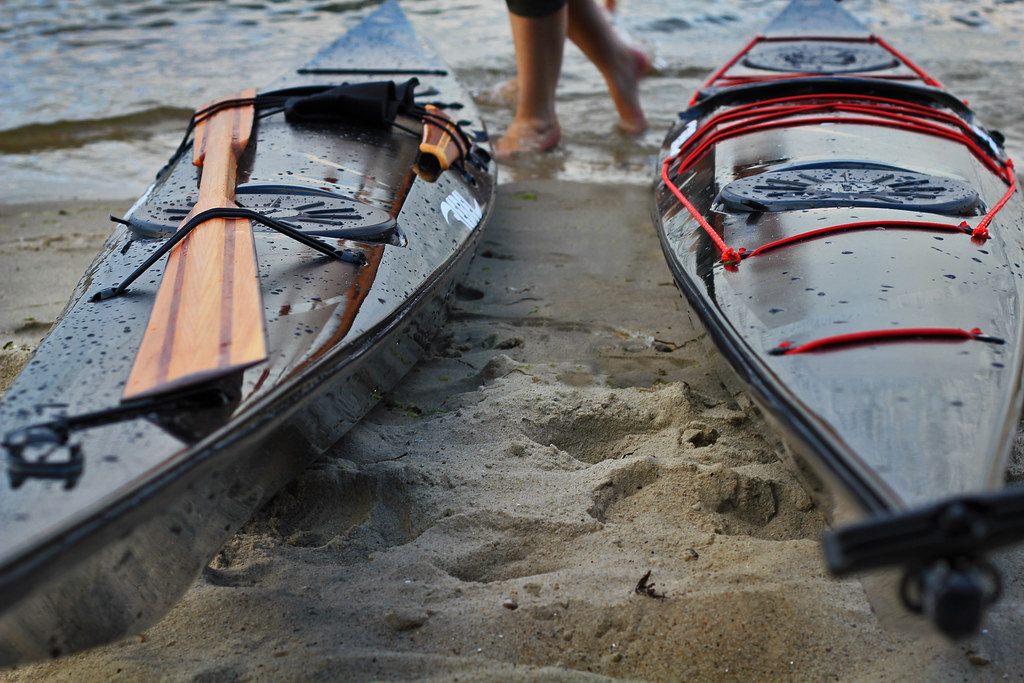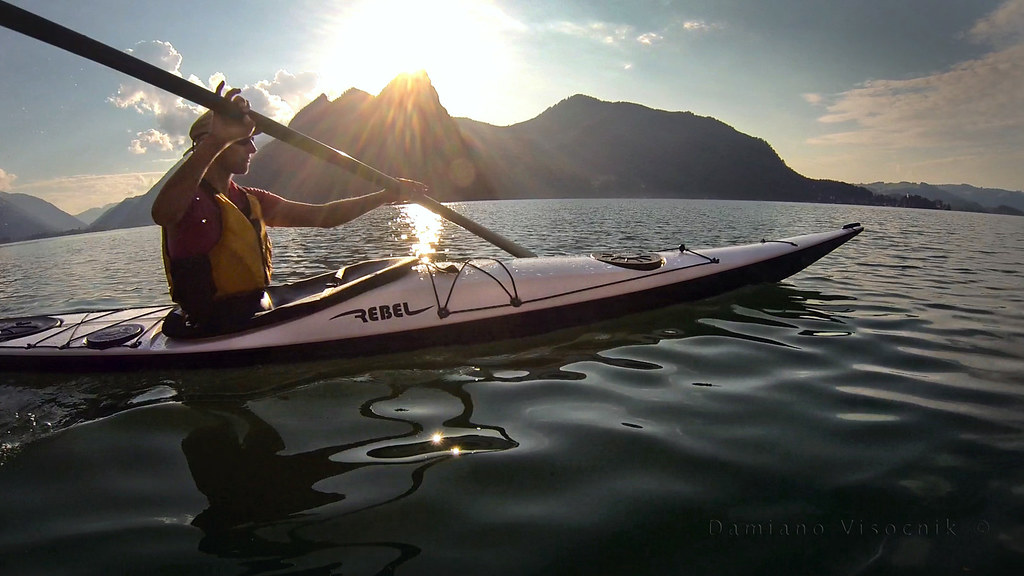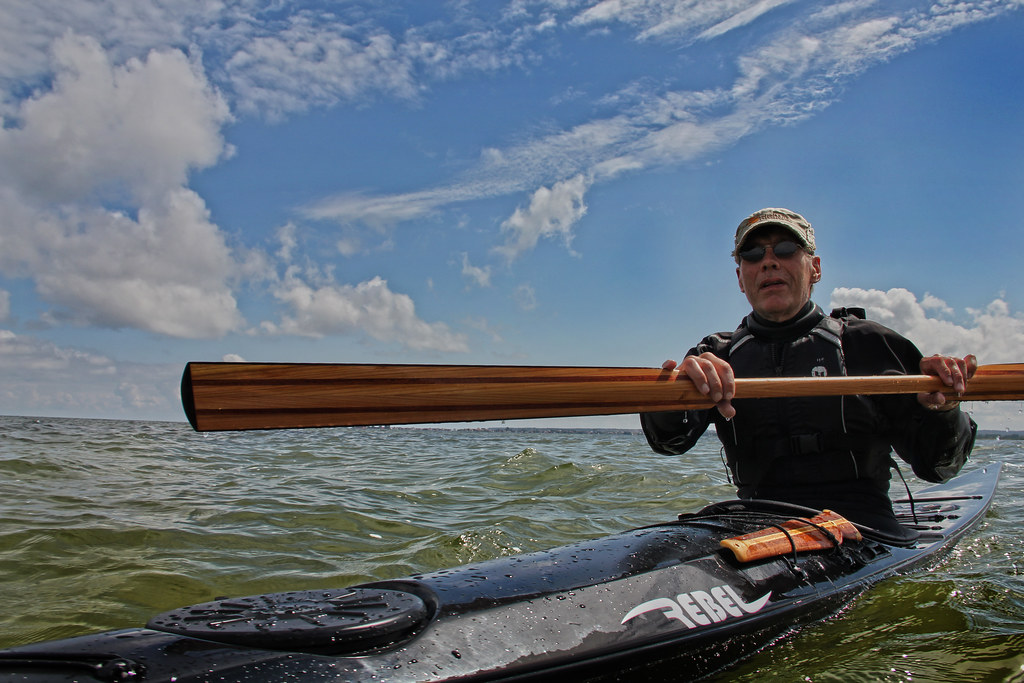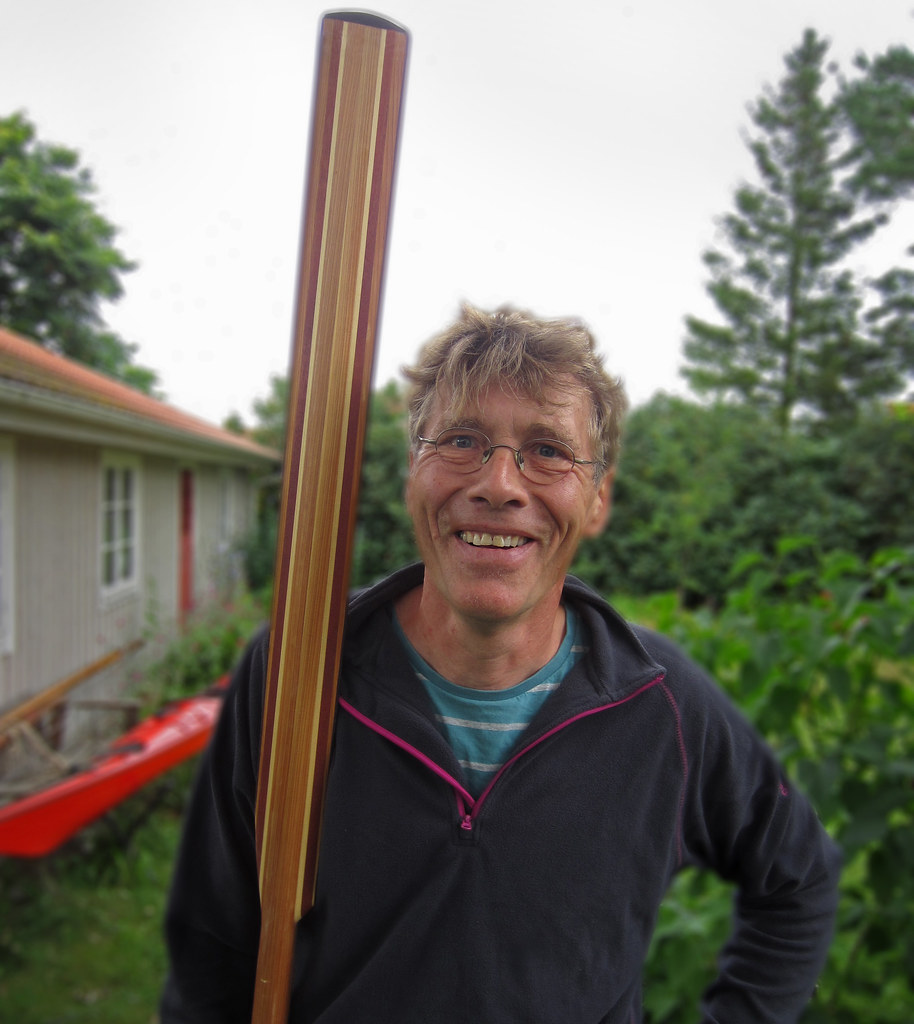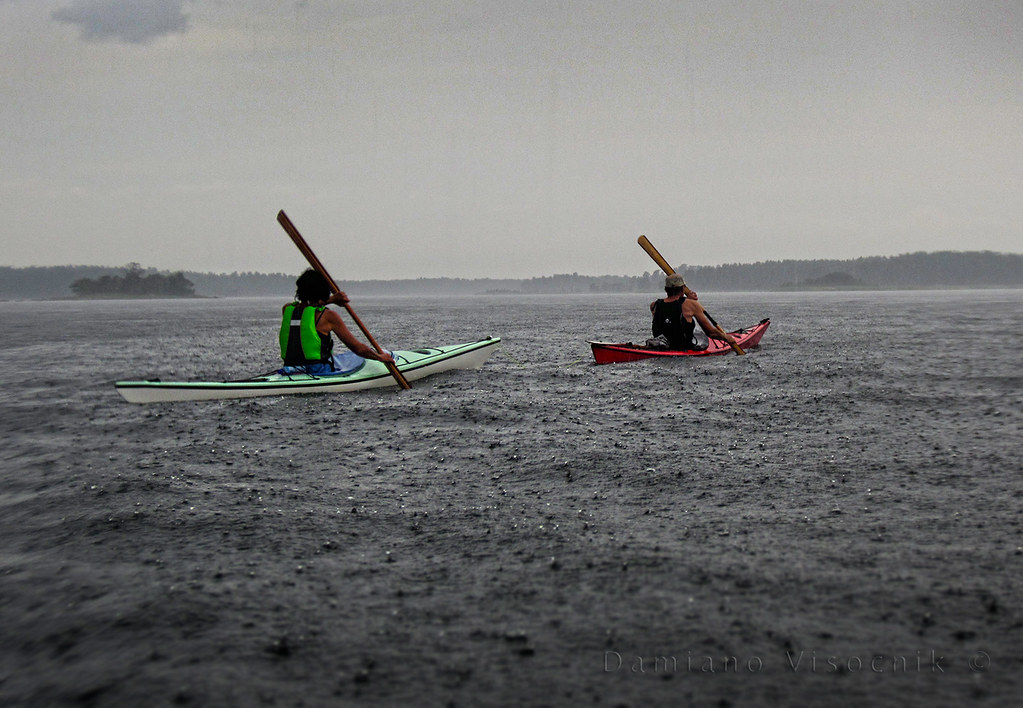.
Johan Wirsen is today one of the most prolific kayak designers.
His home is in Scandinavia and his heritage of sea fearing Vikings is well represented with his skillful art of designing modern sea kayaks.
I was lucky to meet Johan in 2011 when I invited him on a trip to the Queensland tropical coast.
A very understated person with great insight, Johan is an incredibly likable character.
Humble and considerate in his thoughts and trusting by nature has not always been an advantage in the cut-throat business of sea kayak manufacturing.
He has been designing and constructing boats and kayaks since early teens and it is his livelihood.
Last July I visited him in his hometown of Borgholm on Oland Island, Sweden and he revealed to me that something big was brewing in his shed.
After years of designing and working for other manufacturers, fed up with some of their attitude and malpractices (he got ripped off several times) he decided that it was time to launch his own brand: Rebel Kayaks.
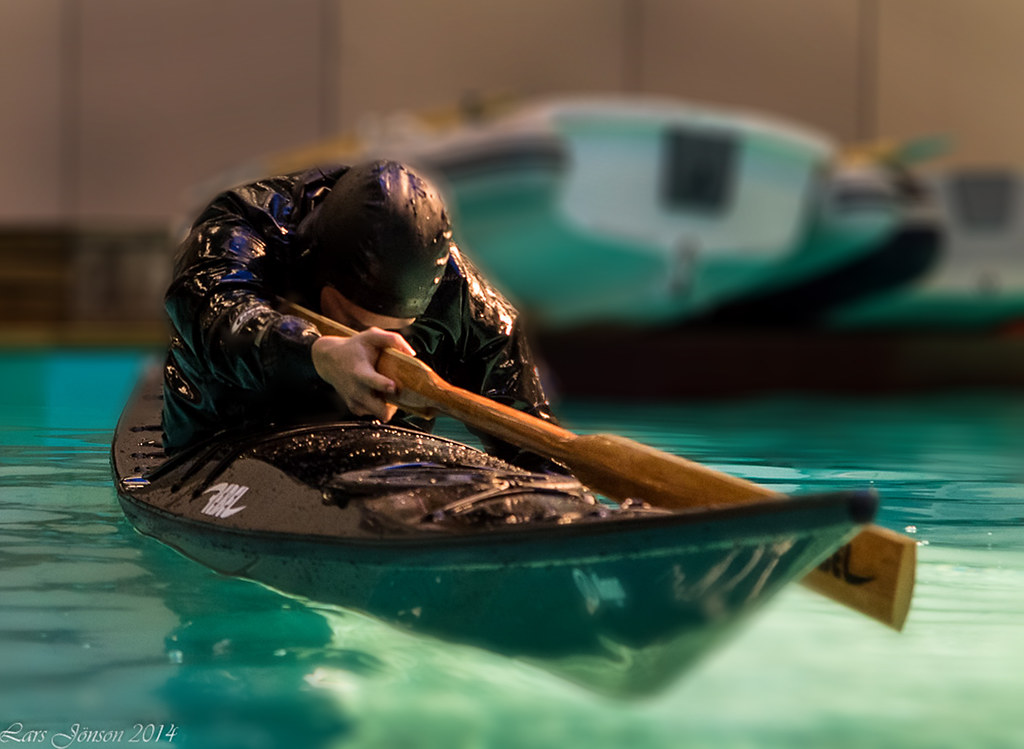 Ann-Kristin Skinlo at Göteborg Boatshow_ image with permission from Lars Jönson
Ann-Kristin Skinlo at Göteborg Boatshow_ image with permission from Lars Jönson
I took the opportunity to interview Johan Wirsen:
gdn) You have started a new
brand of sea kayaks called Rebel: why another brand ?
JW) -You know, since 2001 I have
been working independently with kayak designs for a number of companies. Of
course I was building and designing my own kayaks before that so I more or less
took the experience I had and transformed that from “one off” designs to a serial
production. But as you know, the kayak business is also quite dirty and some of the companies
I have been working with were also very greedy, so I have decided to terminate
some contract with the “big ones” and start all over with this new little
company Rebel Kayaks and try to keep the passion for the sport and paddling
alive for myself.
Where and when will these kayak be available?
- For the moment we are that
lucky that we have been contacted by so many high end retailers, dealers and customers that we can’t satisfied them all!!
The truth is that we are too small and can’t
produce that many kayaks, yet. When we shift our production to Poland we naturally will start to sell our kayaks
here in Northern Europe.
image courtesy of Janusz Kowalski from Rebel kayaks
What style of kayaks
are you focusing on under your brand Rebel?
- The first two models that we put
into production are my two Greenland
styled kayaks: the “ILAGA” and the ”T”. Those are the type of kayaks that I personally
feel a lot for, and since they are well known they are like a signature for me. It feels important to me that I design and in the future build kayaks that I would
like to paddle myself.
Since our production capacity is not too big, we also
prefer to put the effort into building light and stiff. – Why build something you would not want for yourself ?
Are you still designing
for other manufacturers?
-Yes I still do some work
for other companies, and for the moment I am working on a Coastal Rowing boat.
I notice a certain consistency of style in your creations even if the kayaks that you have designed have different goals in mind. How did you get involved in boat design and what is the driving
force for your passion?
-Born on an island, and growing up with a father that had all kinds of
boats (anything from fishing to sailing and even a water-ski boat) it is not that
unusual that I got this interest and eventually I went to school to become a boat
builder. I have always tried to build or rebuild my own stuff, even
motorbikes!
But boats and especially traditionally boats with smooth lines have
always appealed to my eyes. And there is something special about boats and the tree dimensional shapes that should be put together in a smooth way (to achieve less drag).
For ex. The single coastal
rowing boat that I recently designed where I had to learn new traits while listening to skilled rowers
to get the ergonomics right. I am not a rower myself so there was a lot to learn.
Another kind of boats I love
is our traditional wooden boats and of course to sail them.
The picture shows my 17´ “Sandbacken” which is our traditional type of boats from our Island
What? Rowing boats???
- Yes, this is actually really funny.
It started
as a small project that then won tree medals in last World Championship!! (Gold
and Bronze – men, and Silver – woman)
Mats Leo (rower and the owner
of the project) asked me if I could help him to design a boat and together with one
of the most skilled rower here in Sweden, Peter Berg, we got this
far!!
Pictured Peter Berg. Recently Peter Berg also won a race in Monaco
Sea kayak sailing:
what do you think of that?
- I must admit that I have not experienced sailing with a kayaks before I visited Australia. But I really got
hooked! It is fun, it is energy saving
and the “Flat Earth Sails” are working well. The position of the mast is not
ideal on a sea kayak, however at the same time you don’t want it to
interfere with paddling. But it works, and I recommend
paddlers to try out.
Swede form or Fish
form: what is the best hull shape?
- A quick explanation, or to
say when and where is best would be hard to describe here in a short form.
A Swede form
(the widest part aft of centre of the hull ) creates less drag and wave resistant
on the surface resulting in more laminar flow and less turbulent
flow than on a fish form, that has the opposite shape. However there are also so many
other things to be taken in consideration when designing a kayak or a hull.
In my current designs I concentrate on the thought of how strong we are as a paddler, and I try to make a kayak as fast as possible in the low speed area, let say in 3 – 4 pound drag area; because
this is where most of us ordinary paddlers fit with our “touring sea kayaks”.
If you would like more info please visit www.marinerkayaks.com and click the link at the bottom about designs. It does not tell every thing but can give you something to think
about.
When I am working on a new
design, in most cases I also build and test paddle my kayaks. It gives me the
possibility to make adjustments before the kayaks goes in production, unlike many other producers today that make something up on a computer and then
email it to a CNC-machine shop. Furthermore, in their catalog, they will then tell you all about
the kayak's advantages before they even ever built the first one.
Johan, you know that
this is a passion of mine: What do you think of Greenland
paddles?
- In the beginning I did not
find the Greenland paddles interesting. I had
been using a Euro paddle produced from our Swedish brand VKV for many years and
modified the size of the blade more for a touring paddling, since the original
blade was too big for long distance paddling; I also made the paddle shorter and I was happy with that.
When I started to become more focused on rolling and was paddling more Greenland style kayaks I
had to re-think. I can’t say that I have a pure Greenland
paddling technique and while I do more what is intuitive and adept to the situation I
almost never use anything else than a “stick” today. If speed is a concern the Greenland paddle is not limiting, and if we talk about feeling I have the biggest respect
for that paddle.
I love to hold onto a wooden paddle, even if I have had
in mind to make some carbon ones. However hollowed ones made out of cedar are around 650 gr.
image courtesy of Janusz Kowalski from Rebel kayaks
- If anybody here in
Scandinavia is interested in learning good rolling, or paddling techniques, consider Helen
Wilson and Mark Tozer from Greenland or Bust in partnership with Rebel Kayaks, on their “Nordic Tour 2014”: a three months long tour around Sweden, Denmark and Norway. For more info visit www.greenlandorbust.org
I have seen you tool
around with the shape of the Greenland paddle and
I have seen an interesting twist to the traditional shape. Thoughts on that?
- I started to make my
paddles like that a few years ago. I like the shoulder on the loom as a
position for my thumbs; at the same time I just make the other (top) side smoother for my hand to hold onto. What is most important is that the edges of
the blade should be sharp so the paddle works quietly. I also have my tip of the
blade more rectangular and at a slight angle. Some of my paddles have been copied and are for sale at Rebel Kayaks now. The paddles are made of cedar with ash edges as a harder more durable wood. The length of my paddles is often
around 2.18m total, while the width of the blade can vary.
Last words?
Well I guess that would be: With paddling try to make it your own journey.
The experience I have is not “one size fits all”. We all have to listen to our self and it is not always that important what gear we are using or if we go to the most exotic places; your own bay is often good enough. Paddling or sailing is mindfulness in itself for me, and hopefully for you too.
/ Johan Wirsén
.
